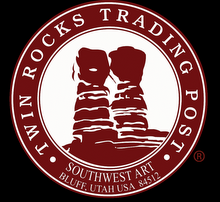
Damele is a wonderfully distinctive turquoise, very hard, and visually appealing. It forms in veins and occasionally as nuggets in carbonaceous chert and also diatomaceous earth. Damele is a well known mine known for its highly sought after cabochons and beads. It ranges in color from pure lime-green through bright chartreuse; yellow with black webbing; white; orange and brown; a caramel color turquoise with bright green polka dots, and small black nuggets with bright yellow-green bumps poking out of the black matrix. Normally the turquoise is associated with black, brown, or tan matrix but Damele turquoise is not normal by any standard.
A small, tightly run operation, the Damele mine is located thirty miles east of Austin, Nevada. The mine is located on The Dry Creek Ranch owned by the Damele family. There, they raise unique horses that carry the Damele name. Benny Damele discovered the mine sometime around 1973. Soon thereafter, Clyde Wright became involved in mining the claim and worked it for approximately 18 years. Tony Cotner, an excellent miner, merchandiser and truly colorful character, has owned the claim since 1990 when he bought it from Benny Damele. Mr. Cotner, also known as"Mean Green", states there is an ancient subtropical zone located beneath the mine that may be responsible for the unusual colors associated with Damele turquoise although he is unsure whether the organic environment has anything to do with the coloration.
Chemical composition: CuAl,(PO404(OH)8.4H2O.


